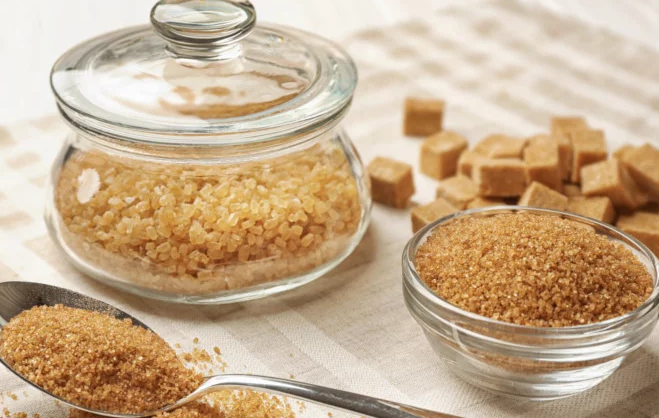Brown sugar is a familiar spice and an indispensable ingredient in every family’s kitchen. It not only brings a sweet taste to dishes but is also trusted by many housewives. There are many types of sugar available in the market, such as white sugar, rock sugar, and brown sugar, each with its unique characteristics and uses.
Learn more about the benefits of each type of sugar at: [link to website]
With its distinctive sweetness and wonderful benefits, brown sugar is gradually becoming popular with many homemakers. Do you know much about this type of sugar?
In this article, we will explore brown sugar, its advantages, and how it differs from white sugar.
1 What is Brown Sugar?

After crystallizing white sugar, the remaining syrup will form a thick, dark mixture called molasses. Manufacturers then use this syrup to mix with white sugar, and through a processing procedure, brown sugar is produced.
Like white sugar, brown sugar is a type of sucrose with a fine granular texture. However, this sugar is brown because it is dyed on the outside with molasses at a ratio of 8-10%. The color of brown sugar depends on the amount of molasses added by the manufacturer, resulting in various shades, from dark brown to golden brown.
Nutritional Value of Brown Sugar
Brown sugar has a low caloric value, with only about 373 calories per 100g. In addition, this type of sugar is rich in minerals such as carbohydrates, calcium, magnesium, potassium, and iron.
Types of Brown Sugar
There are two main types of brown sugar available in the market: natural brown sugar and commercial brown sugar.
Natural brown sugar is produced by retaining some molasses in the final stage of the sugar-making process. On the other hand, commercial brown sugar is made by dyeing white sugar with molasses to create a brown color.
What is Brown Sugar Used For?
This type of sugar is often used in baking, beverages, desserts, grilled dishes, and stews, as it adds natural color and enhances the flavor of the food.

When baking cookies, if you want them to have a deeper sweetness, increased moisture, and a golden brown color, replace a portion of the white sugar in your recipe with brown sugar.

Marinate pork with brown sugar, fish sauce, pepper, garlic, and shallots, and your meat will turn out tender, delicious, and beautifully golden.
2 Health and Beauty Benefits of Brown Sugar
Weight Loss and Obesity Prevention
Due to its low-calorie content, brown sugar is often used as a substitute for white sugar in cooking and beverages. This helps prevent obesity and supports weight management for those aiming for a healthier weight.
Skin Benefits and Acne Prevention
For those seeking natural, safe, and effective beauty methods, brown sugar is a great option. Rich in molasses and glycolic acid, this sugar has anti-aging and acne-fighting properties, leaving your skin soft, smooth, and radiant.
Discover more beauty benefits of brown sugar at: [link to website]

Relieves Menstrual Cramps
The potassium in brown sugar helps reduce uterine muscle pain and cramps during menstruation. To ease menstrual cramps, try drinking hot lemonade sweetened with brown sugar.
Postpartum Recovery
After giving birth, mothers need a significant amount of time to recover their energy. Brown sugar, with its rich mineral content, including calcium, provides a substantial energy boost to help speed up the recovery process and combat fatigue.
Although brown sugar may seem unfamiliar, it is actually quite common and widely used in daily meals. We hope that this article has helped you understand more about this type of sugar and its wonderful benefits.
You may also like:



































